Monstera Deliciosa
Monstera Deliciosa, commonly known as the Swiss Cheese Plant or Split-Leaf Philodendron, is a tropical evergreen vine native to the rainforests of Central America. It is highly popular as an indoor plant due to its large, unique leaves and ability to thrive in various conditions.
Appearance:
Monstera Deliciosa is characterized by its large, glossy, heart-shaped leaves that develop unique splits and holes as they mature, resembling Swiss cheese. The leaves can grow up to 2 feet (60 cm) in diameter. The plant typically grows as a vine, producing aerial roots that can attach to surfaces or structures for support. When mature, it may produce an edible Monstera fruit or Mexican breadfruit.
Care and Cultivation:
Here are some key points to consider when caring for a Monstera Deliciosa:
– Light: Monstera Deliciosa thrives in bright, indirect light but can tolerate lower light conditions. Avoid direct sunlight, as it can scorch the leaves.
– Temperature: Ideally, maintain a temperature range of 65-85°F (18-29°C). It can tolerate slightly lower temperatures but is sensitive to frost.
– Watering: Water the plant thoroughly when the top inch of soil feels dry. It prefers moderately moist soil but can tolerate short periods of drought.
– Humidity: Monstera Deliciosa prefers high humidity but can adapt to average humidity levels. Mist the leaves or use a humidifier to increase humidity if needed.
– Soil: Use a well-draining potting mix that retains moisture without becoming waterlogged. A mix of peat moss, perlite, and orchid bark works well.
– Fertilizer: Feed the plant with a balanced, water-soluble fertilizer once a month during the growing season (spring and summer).
Growth and Propagation:
Monstera Deliciosa is a fast-growing plant under favourable conditions. It can reach 10-20 feet (3-6 meters) in its natural habitat but is more compact when grown indoors. The plant can be propagated through stem cuttings or air layering. Take cuttings from a mature plant and place them in water or a rooting medium until roots develop.
Toxicity:
Monstera Deliciosa contains calcium oxalate crystals, which can cause irritation and discomfort if ingested. Keep it out of reach of children and pets, and wash hands after handling the plant.
Aesthetic Uses:
Monstera Deliciosa is a popular choice for interior decoration due to its striking foliage. It adds a tropical and exotic touch to homes, offices, and other indoor spaces. The leaves are commonly used in floral arrangements and can be displayed in vases for their ornamental value.
Health Benefits:
While Monstera Deliciosa is primarily grown for its ornamental qualities, some believe its leaves and roots possess medicinal properties. However, scientific research on its health benefits is limited.
Monstera Deliciosa’s unique appearance, ease of care, and adaptability make it a favourite among plant enthusiasts. Whether you’re a beginner or an experienced plant lover, this tropical plant can bring a touch of nature and elegance to your indoor spaces.
Things to know about Monstera Deliciosa
Common (vernacular) Name
विंका (Hindi), Vinca, Sadabahar, Madagascar Periwinkle, Catharanthus Roseus, Nityakalyani, Bara Massi, Bright Eyes, Cape periwinkle, Graveyard Plant, Old maid, Pink Periwinkle, Rose Periwinkle, and many more.
Botanical Name
Catharanthus roseus
Origin
Island of Madagascar
Family
Apocynaceae
Plant Type
Tropical plant
Plant Features
Ornamental / Evergreen / Exotic
Life Cycle
Perennial
Landscape Uses
Container, Walkways, Ground Cover, Mass Planting and Houseplants.
Species
Apricot Cooler Improved, Aztec Pink Magic, Blue Pearl, Cascade Beauty White, Cooler Icy Pink, Cooler Orchid, Cooler Peppermint, Cora Burgundy, Cora Cascade Cherry, Cora Cascade Strawberry, Cora Red, Experimental Dee, Jams and Jellies, Mediterranean Lilac, Mediterranean XP Cherry Halo, Mediterranean XP Rose Halo, Nirvana Pink Blush, Nirvana Red, Nirvana Sky Blue, Nirvana Violet, Pacifica White, Sunshower Lilac, Titian Icy Pink
Varieties
It comes with more than 30 varieties in various leaf and flower colourations.
Size
Height : 1 to 1.5 feet tall and Width : 1 foot wide when mature.
Indoors or Outdoors
Outdoors : Anthurium can be used outdoors in shady plantings; avoid direct sunlight.
Indoors : Excellent plant growth in bright light or indirect light. Best indoor plants for beginners.
Blooming / Flowering
The blooming period is throughout the year.
Flower Colour
It’s come in Pink, White, Purple, Red and Multicoloured.
Lucky Plant
According to Feng Shui, It brings Good Luck in your relationships.
Lighting / Sun Exposure
Bright Indirect Sunlight.
Temperature
Grow best in warm temperatures above 21°C and tolerate max temp. as high as 32°C.
Growth Rate
Anthurium is a slow to moderate grower plant.
Watering
Moderate watering, Mist or overhead sprinkler to provide water and to improve relative humidity. Do not tolerate overwatering, It can cause root damage and leaf yellowing.
Fertilizer
Applying slow-release fertilizer or a water-soluble liquid fertilizer once or twice during the growing season (from spring to summer) is recommended.
i.e., - Cow dung, DAP, Compost, NPK 30-10-10 fertilizer, liquid organic fertilizer etc.
Pruning
Pruning of Anthurium, little is needed. However, trimming away only discoloured or dead leaves.
Propagation
Seeds : The best time to sow your Anthurium seeds is at the end of Winter / early Spring, but it can't give good results.
Stem Cuttings : The easier propagation methods of Anthurium in water or soil via stem cuttings can be done during the warm growing season.
Division : The division of Anthurium can be done in the Rainy season or, better, from February to March.
Dormancy Period
Month : November to February (winter season)
Shed their leaves and show poor growth, Watering minimally.
Avoid : Propagate, Fertilize and Repotting.
Container
Ceramic Pot, Plastic Pot, Terracotta or Clay Pot is preferred, which ensures good drainage and water holding capacity.
Soil Type
A well-drained Loam / Coarse potting soil and water-holding capacity are recommended. Prevent soggy potting medium.
Our recommendation for the potting mix: Equal part mixture of Garden Soil (25%) + Compost (25%) + River Sand (25%) + Cocopeat (25%). You can substitute pieces of Charcoal, Vermicompost, Perlite etc.
Soil pH
Lightly Acidic soil - Ideally, 5.5 to 6.5 pH (potential of hydrogen) is recommended for Anthurium.
Repotting
It is advisable to repot the Anthurium every year or two, preferably during the spring to midsummer season.
Maintenance
Low maintenance and easy to grow.
Properties
The plant poses toxicity risks to both humans and pets if ingested.
Benefits
Excellent indoor air purifier, Anthurium plants turn CO2 into oxygen. It purifies indoor air by removing harmful chemicals like ammonia, toluene, xylene and formaldehyde.
Special Features
It does not attract hummingbirds and pollinators in the same way it does butterflies, bees, or wasps.
Infestation / Pests
Aphids, Scale insects, Thrips, Mealybugs, Spider mites, caterpillars etc.
Diseases / Problem
Physiological Problem : Anthracnose, Leaf Spot and Powdery Mildew.
Bacterial Problem : Bacterial Blight, Bacterial Wilt and Black Nose Disease.
Fungal Problems : Root Rot and Water Mold.
In conclusion, Vinca or Sadabahar plants are prized for their beautiful flowers, easy maintenance, and versatility in various garden settings. With their vibrant colours, heat tolerance, and ability to attract pollinators, they can bring joy and visual interest to any garden or landscape.
Some Glimpse of Monstera Deliciosa

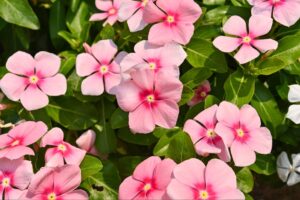
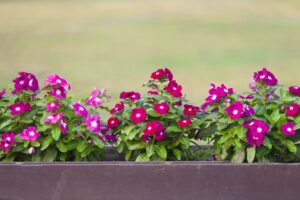
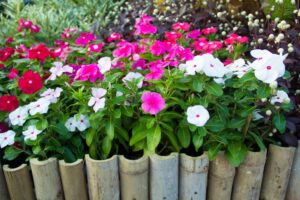
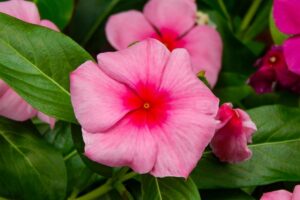
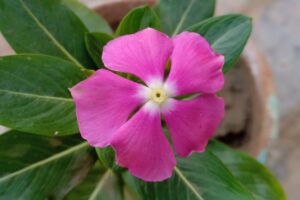
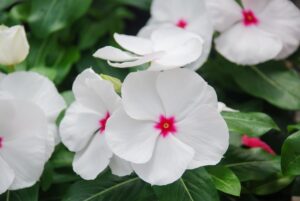


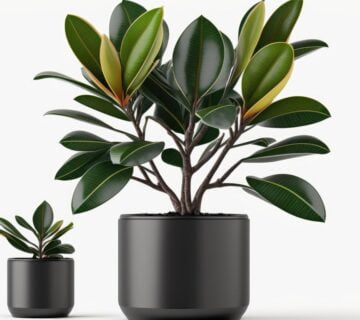
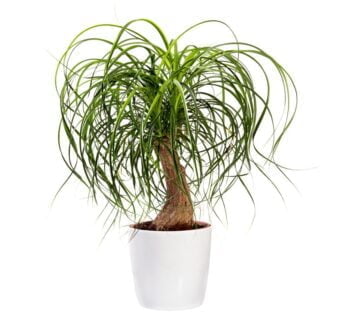
No comment